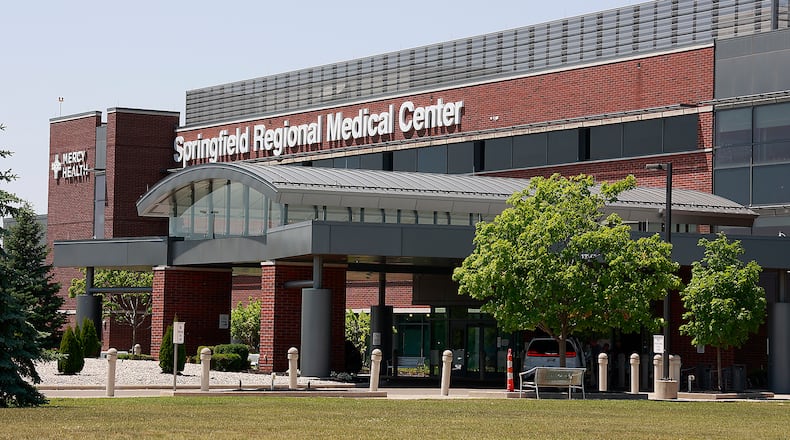“To avoid care disruption for Anthem Medicaid members in Ohio, Anthem and Mercy Health have reached an understanding to allow our Medicaid members to continue care at Mercy Health doctors and hospitals through standard out-of-network reimbursement for a transition period of no less than 90 days,” said Jeff Blunt, communications director for Anthem Blue Cross and Blue Shield in Ohio.
This means that continuing care at Mercy Health requires no special out-of-network authorization, beyond typical prior-authorization requirements, he said.
Mercy Health has been in rate negotiations with Anthem Blue Cross and Blue Shield for nine months, the hospital system said Thursday. Mercy Health said last week Anthem “rescinded its most recent offer and discontinued negotiations,” but Blunt said on Monday that Anthem is still working to reach an agreement.
“Despite months of ongoing negotiations, Mercy Health has been unable to reach a fair agreement with Anthem. As a result, effective July 1 our Mercy Health providers and facilities are now considered out-of-network for patients with Anthem Ohio Managed Medicaid insurance,” Jennifer Robinson, public relations and communications manager for Bon Secours Mercy Health, said on Monday.
Nearly 50,000 Ohioans, including 3,624 in the Springfield market, are losing their Medicaid insurance coverage with Mercy Health, according to estimates from Mercy Health, due to the stalled negotiations. Robinson said all patients will continue to have access to all Mercy Health hospitals when emergency treatment is required, regardless of the network status with Anthem.
“We want to continue to negotiate to ensure access to care is available when you need it at a Mercy Health location that is convenient for you, and we encourage Anthem to do what is right for its Ohio Managed Medicaid members, today and in the future,” Robinson said.
The hospital system provided information on what patients can do, including saying patients can call Anthem at the number on the back of their insurance card to find out if they qualify for continuity of care options. Patients can also call the Ohio Office of Medicaid hotline at 800-324-8680 for other possible options to maintain access to Mercy Health facilities and providers. For more information, visit mercy.com.
Anthem and Mercy Health have recently-signed contracts in place for all lines of business until Jan. 1, 2025, Blunt said. Medicaid, though, allows hospitals to terminate contracts with 60 days notice. Anthem began serving Ohio Medicaid members on Feb. 1, but they have served Medicaid members in other states prior to then.
Higher costs are needed to keep up with labor and supply costs, Mercy Health said. Their labor costs increased 9.6% from 2021 to 2022, and operating expenses and overall cost of care increased by 6.8%, according to the hospital system.
When asked about what rates are being discussed, Mercy Health declined to answer and Anthem said the requested increases are more than double the current hospital inflation rate.
Mercy Health also isn’t asking for increased payments for Anthem Medicaid, Blunt said, but instead trying to get Anthem to agree to higher costs for commercial plan members. Mercy Health did not respond to this statement.
“While Anthem may be refusing to come to an agreement, we continue to be in network with every other Medicaid plan in Ohio,” Robinson said on Thursday.
This news outlet reached out to Mercy Health for comment on this latest update.
The Medicaid program represented 9% and 12% as of Dec. 31, 2022 and 2021, respectively, of Bon Secours Mercy Health’s payer mix, according to financial statements filed with the Municipal Securities Rulemaking Board. Commercial and other third party insurance coverage accounted for 44.4% of payers in 2022 and 46.2% in 2021, according to the financial statements.
Bon Secours Mercy Health is one of the 20 largest health systems in the U.S. and the fifth-largest Catholic health system in the country. The health system employs a total of 60,000 associates working in Florida, Kentucky, Maryland, New York, Ohio, South Carolina and Virginia, as well as throughout Ireland. Mercy Health – Springfield, includes Springfield Regional Medical Center and Urbana Hospital.
About the Author

